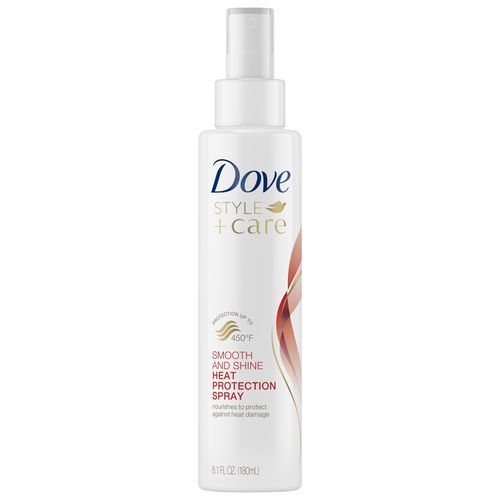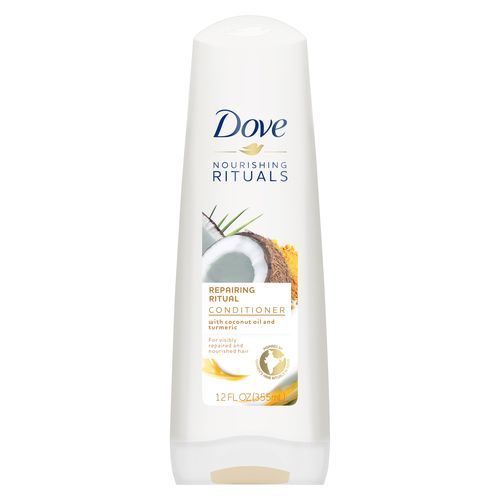
Why Is My Hair So Dry: Causes and Solutions for Dry Strands
Dry hair causes, cures and everyday tips for prevention.
If you’ve ever asked yourself, “Why is my hair so dry?” you’re not alone. We’ve all been there! You see it, and you can feel it: Those dry and damaged tresses are with you every day, messing with your overall glam. When left untreated, they can lead to even more unsightly breakage and damage that falls in the category of being beyond repair.
But before you go and chop it all off, it’s crucial to understand how to fix dry hair and reassess those daily hair habits that you may not realize can cause serious havoc. Understanding what you’re currently doing can help you treat dry and damaged hair correctly and help you break the cycle.
Why Is My Hair So Dry? You Asked, We Answered
Read on to understand this dry hair causes better, and learn how to moisturize your locks the right way:

1. Lack of Moisture
We all know that hair is dead; however, hair is approximately 12 percent water and needs some dose of daily moisture to fight frizz. This doesn’t mean actually adding water back into the strand but rather keeping the cuticle evenly coated and optimally hydrated, both inside and out, so moisture is locked in and doesn’t escape. Otherwise, a thirsty hair strand will resort to absorbing moisture outside the cuticle and in the atmosphere, and on an especially humid day, this results in frizz.
Love Beauty and Planet
Love Beauty and Planet Melon Water & Hyaluronic Micellar Shampoo

Love Beauty and Planet
Love Beauty and Planet Melon Water & Hyaluronic Micellar Conditioner

The number one thing to remember is to start in the shower. A moisturizing duo can work wonders on your strands and set the foundation for how your hair behaves afterward. A hyaluronic acid shampoo and conditioner, like Love Beauty and Planet Melon Water & Hyaluronic Micellar Shampoo and Conditioner. We love this set because it’s infused with melon water and hyaluronic serum, which helps add moisture while balancing your scalp without stripping it.
2. Too Much Heat
Blow-outs, flat irons, curling irons—it’s no wonder our tresses look and feel fried! While we love the professional-grade results we get from heat stylers, getting there usually means incurring some level of hair damage. A fair compromise would be skipping heat-styling on some days (weekends are great for that naturally air-dried glam you’ve wanted to try!).
On days you do pick up that blow-dryer or iron, always remember to coat hair with a thermal protectant beforehand. Whether with dry, damaged hair or not, each of us needs to use a heat protectant before heat styling! It’s crucial because heat-styling can do some serious damage without first protecting your hair. Hot tools are, well, hot and can singe and burn off locks even in short bursts of time. To prevent this, you need to use a heat protectant (think of it as a potholder for your strands).
A heat protectant, like Dove Style+Care Smooth & Shine Heat Protection Spray, helps defend hair from heat-styling damage—and this formulation, in particular, also infuses hair with some lightweight conditioning to hit two birds with one stone!
3. Sun Damage
It isn’t just those hot tools that cause heat damage; hair, just like skin, is also susceptible to sun damage. By now, we all know about the harmful effects of the sun’s rays, which can zap your cuticles of moisture. The cuticles serve as a protective layer; however, with extreme heat, this layer weakens, lowering its ability to hold onto moisture, which can then cause breakage. To help avoid sun damage to hair, we suggest protecting your head with a hat or a scarf and spraying your locks with UV protective spray when you know you’ll be spending time outdoors.
4. Chemical Treatment Overload
To truly combat dry, damaged hair, you’ll have to rein in how much or how often you process your hair. Dyeing your hair isn’t always damaging, but if you choose to bleach your hair, change your hair color regularly, or get a permanent treatment such as a rebonding or straightening treatment, these can all add up! Process your hair less often and use hydrating hair oil to soften your hair to combat damage.
5. Overbrushing
That old wives’ tale of brushing 100 strokes a day is old. Not only can this oversensitize your scalp, unless your hair is a virtual rat’s nest of knots, but it’s also grossly unnecessary. Keep brushing to a minimum—detangling after a shower and some minimal styling throughout the day should suffice. Ed’s note: Having the right brush or comb also makes a difference!
6. Over Manipulation
We love get-up-and-go styles like the next gal, but the constant tugging and pulling from a too-tight ponytail or updo can also cause damage. The wrong accessories (like rubber bands) can also contribute to breakage.
We suggest using a fabric-covered hair tie, a telephone cord scrunchie, or a chic barrette instead of a rubber elastic. Also, why not take a break every so often and rock some beachy, undone waves or your natural texture down instead?
7. Overwashing
If you are a die-hard daily hair washer, it’s time we had a chat about how often you should wash your hair. Real talk: There is no reason you need to wash your hair every day unless you overdid it on the styling products the day before, sweat a lot, or both. Overwashing can lead to dryness and damage, as the hair swells each time it’s exposed to water and can lose moisture. Over-washing can also strip your hair and scalp of their natural oils, both needed in order to stay healthy. When you wash your hair, shampoo it and condition it properly with the right duo for your hair type.
Dry and damaged hair can be resolved by taking small steps every day that help nourish hair and nip that wear and tear in the bud. Remember, the small steps can spell the difference between a healthy and an emergency haircut!
What Causes Dry Hair?

\Why is my hair so dry? Curly hair is naturally dry. Use hydrating products to help combat moisture loss.
1. Genetics
There are a few different reasons why you may just have naturally dry hair. The first is if you have curly hair. If you have a head full of curls, any oil your scalp does produce will have a hard time making it down the hair shaft. It’s one of those things that you obviously would be hard-pressed to change, but you can definitely look into products for your hair type: They’re more moisturizing and address your specific concerns.
2. Damage
On the other hand, damaged hair is usually a factor of human error (sorry!). Hair is surprisingly not all that strong at the end of the day. We like to think that it’s indestructible, but hair is made vulnerable quite easily. You can damage your hair from simple things like over-washing, doing too many chemical treatments, and even daily heat styling.
If you struggle mostly with damaged ends, you can use products to get your smooth, silky hair back easily. First, get a trim—you’ll need it to keep those strands healthy-looking and free from split ends. Second, invest in a restorative hair care system.
These kinds of shampoos and conditioners have been gaining more buzz lately as more and more people experiment with bleach, color, and playing up their texture—all of which can wreak havoc on your hair. Dove Nourishing Rituals Repairing Ritual Shampoo takes inspiration from women’s deeply nourishing hair rituals in India. It’s enriched with coconut oil and turmeric to cleanse gently and restore visibly damaged hair to a healthy look and feel. This, together with the Nourishing Rituals Repairing Ritual Conditioner, helps encourage a strong, beautiful mane.
3. Age
Just like anything in the body, our hair ages over time. Effects of aging on hair can include a change in texture, too—what once was thicker, fuller, and shinier several years ago can become drier, finer, and more brittle. If you find that you need a bit more intense shot of moisture these days, try using a hair mask, like Dove Nutritive Solutions Anti-Frizz Oil Therapy Hair Mask, once or twice a week. This amazing Buriti oil-infused formula not only helps prevent frizz and encourages smoother, softer hair, but it also nourishes rough, coarse strands without the weigh-down.
What Is Good for Dry Hair? Some Quick Hair Hacks for Everyday
1. Embrace What Nature Gave You
We get it: The allure of the perfect blowout, reality-star curls, or beach-bombshell waves—all can make you want to put in some quality time with those hot tools. The bad news is that they’re not exactly the greatest things for strand health. The good news is that natural looks are back, and air-drying has gotten a better rep over the last few seasons. Heatless styling is also all the rage these days and embracing your natural texture. Try your hand at these looks at least once or twice a week—think of it as a detox for your locks.
2. Play Switcheroo
We’re all busy people who can barely find the time for a long, indulgent shower, much less anything else. In a pinch, substitute your hair conditioner for a hair mask instead, particularly when you feel you need more slip and hydration. Leave on for three minutes, then rinse. You’re done.
3. Go For Silk
Whether it’s an all-over hair dye or subtle highlights, dyeing your hair works can zap hair of moisture and its natural oils. If this process is done regularly, hair can become more and more vulnerable. When you do dye your hair, make sure that you use a shampoo and conditioner designed for color-treated hair to both hold onto your color and treat any damaged strands caused by the hair dye process.
The movement is great these days for silk pillowcases, which cause less friction on hair than cotton. If you think this is too #extra, just consider that silk pillowcases are also gentler and better for your skin and are said to cause fewer wrinkles! Win-win!
4. Do a Balayage
…Or a subtle ombré, a low-commitment gloss, or a grown-in root—whichever color process can afford you longer gaps between appointments. You can still stay on-trend without subjecting your locks to frequent bleaching, plus save some extra bucks in the process, too!
5. Be Nostalgic
Pick up those scrunchies you have stored away in a drawer from back in the day! The good news is that these quirky hair ties are back in the collective rotation, but they’re also (surprise!) less harmful to strand health. If the look really isn’t your style, at least consider a non-fabric version, like those innovative telephone cord spiral elastics, to prevent tugging and unnecessary traction.
6. Get Dusty
The hair dusting technique, a cutting process that entails twisting hair into one rope strand and skimming cutting shears on the edges to remove any split ends, is a quick and easy way to trim hair without sacrificing much length. It’s also a great barometer of strand health. The more breakage or frayed ends that stick out of the twist, the more moisture you need!
7. Snip, Snip
Finally, the last step in ensuring you have soft, healthy-looking hair is to get a real trim. Any dead, lanky, split, or breaking ends are going to make your hair feel ragged and dull. Snip off as much as you need to get rid of any damaged or fried ends. You may need to lose an inch or two, but it is worth it in the long run to have a clean slate for healthy hair.





